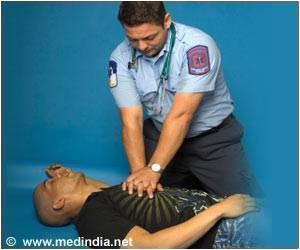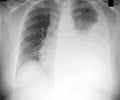Improving the skills of school children and public members in resuscitation after a cardiac arrest could save up to 100,000 lives per year

Bystander cardiopulmonary resuscitation (CPR) by lay people increases survival by 2-3 times, however, today it is delivered in only 1 in 5 out-of-hospital cardiac arrests across Europe on average. Bystander CPR rates vary widely across Europe, with Andalusia in Spain as low as 12%, Germany 17%, through to very high rates in the Netherlands (61%) and Sweden (59%). The actual survival rate varies with the setting, with some countries (generally those in Eastern Europe) having survival as low as 6%, whereas countries with an excellent record in bystander CPR such as the Netherlands and Norway see survival rates as high as 40%.
"The reason for these low overall survival rates is that, without any form of resuscitation, the brain starts to die around 5 minutes after the cardiac arrest. This is usually sooner than most physicians and paramedics can arrive to help. Thus members of the public, by starting resuscitation, can really make a difference that can save someone's life. 60-80% of OOH-CA are witnessed by someone, and those people can help if they are shown how."
He gives the example of Denmark and Scandinavia which now have improved rates OOH-CA survival by focussing on improved education, including for bystander resuscitation. "Someone's wife, husband, son or daughter, friend, taxi driver: absolutely anyone could learn resuscitation, restart a person's heart, and save their life," says Professor Böttiger, He also stresses the importance of the dispatching paramedics when people call their emergency phone number: "If the dispatcher identifies cardiac arrest, the survival rate is higher than if not; rapid dispatching saves lives. Telephone CPR is in addition a method to improve survival of OOH-CA. All telephone dispatchers across Europe should be trained to teach bystander CPR to the person telephoning the emergency."
For education of schoolchildren, the ERC says that children of 12 years and older can be shown resuscitation techniques using just 2 hours per school year, and Professor Böttiger says one hour could be used in Biology or science lessons and another in physical education. Teachers can be trained how to instruct pupils. Training schoolchildren in resuscitation already happens regularly in Denmark.
The ERC has already held one successful European 'Restart a Heart' day (16 October 2013). 16-year-old Kea from Cologne, Germany successfully resuscitated 12-year-old Nic during 2013, while waiting more than 10 min for emergency physicians. Together the two children instructed the European Commissioner of Health, Tonio Borg, how to successfully resuscitate. On 16 October 2014, there will be a second European Restart a Heart Day, with the theme "Your hands can save a loved one's Life".
Advertisement
"Traffic accidents cause far fewer deaths per head of population today, thanks to the billions invested in roads and vehicle safety. Now we must make investments to prevent deaths related to cardiac arrest. Among the things that will make the biggest difference are Europe-wide schoolchildren CPR training; improving dispatcher identification of CPR on the phone to get physicians and paramedics there faster; telephone CPR; European-wide cardiac arrest registries; and legislation that not only requires the registration of each death by traffic accident, but also compulsory registration of OOH-CA," concludes Professor Böttiger. "By improving rates of OOH-CA resuscitation by members of the public to those of the best performing countries in Europe, we can easily save 100,000 additional lives every year in Europe, meaning 274 every day, and one every 5 minutes."
Advertisement
Source-Eurekalert









